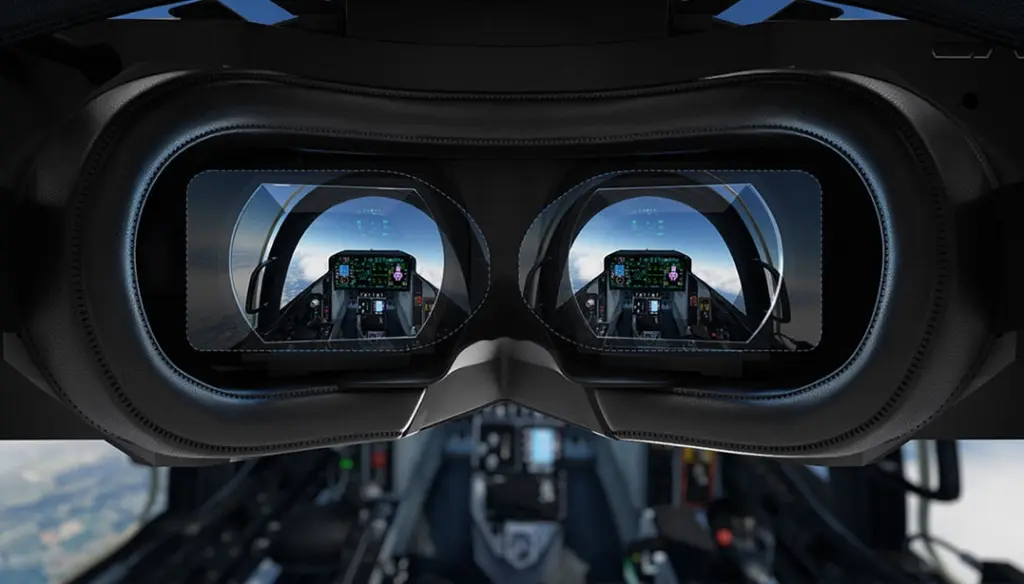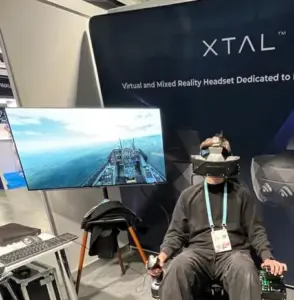Prague-based Vrgineers has teamed up with AMD and Nvidia to develop an innovative architecture for mixed reality simulators using advanced graphical chips from both companies.

The new mixed reality headset, called Xtal 3 Cavu, uses a unique system with 24Mpix image sensors connected to an AMD Xilinx FPGA card to dedicatedly process high resolution mixed reality images very fast. It also uses the latest Nvidia Quadro RTX A6000 GPU to handle the VR graphics and reduce latency.
This new architecture provides a major performance boost for mixed reality compared to standard solutions, enabling much higher image quality and lower latency. It conserves resources and is also more power efficient. The company says feedback from pilots themselves directly shaped the development of the Xtal 3 model. It was engineered to optimize visual clarity, field of vision, and user comfort during intensive flight simulation training. Building on their XTAL 3 VR headset, Vrgineers’ new mixed reality add-on module blends interactive physical switches and levers with VR imagery for more true-to-life simulations.
Originally founded in 2017 to produce VR gaming headsets, Vrgineers has since shifted focus to serve professional clients in aerospace and defense. The startup relies heavily on input from pilots, instructors, and other subject matter experts in designing their aviation-targeted VR products. The system will be embedded into Vrgineers’ MR classroom simulators and sold to partners like the US Navy starting 2024. They also offer the Xtal 3 Neo as a more affordable mixed reality training option.
| Specification | Details |
|---|---|
| Resolution | 3840×2160 per eye |
| Displays | Two 4K fast-switching LCDs |
| Refresh Rate | 75 Hz @ 4K, 120 Hz @ QHD |
| Field of View | 140° horizontal, 90° vertical (default); 180° horizontal, 120° vertical (maximum experimental) |
| Advanced Features | Foveated Rendering, Timewarp |
| Eye Tracking | 120 Hz (up to 210 Hz) |
| Positional Tracking | Lighthouse, ART, Optitrack, Polhemus, Vicon or custom |
| Hand Tracking | Embedded Ultraleap sensor |
| IPD | Auto, 56‐74 mm range |
| Connectivity | VirtualLink cable (5 m); or DisplayPort 1.4, USB 3.2, 12V 3A (5 m) |
| OS | Microsoft Windows |
| Software Support | SteamVR, OpenXR, Unity, Unreal; Flight Sims: X-Plane, Prepar3D, etc. |
| Simulation Support | Commercial & professional platforms |
| Weight | 600 g / 21 oz (w/o head strap) |
| Size | 293 × 123 × 113 mm |

